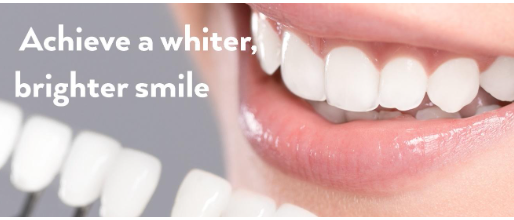5 Facts About Teeth Whitening You Should Know

Our patients frequently ask about teeth whitening. Indeed, according to a survey by the American Academy of Cosmetic Dentistry, “When respondents were asked, ‘What would you like to improve most about your smile?’ The most common response was: Whiter & brighter teeth.”
The moment you smile, it leaves a lasting impression on those you encounter. If you're contemplating teeth whitening, here are five essential facts to be aware of.
1. How Teeth Become Discolored
There are several different reasons that your teeth may have changed color. Typically, the intake of specific foods and beverages can alter the color of your teeth. Drinking red wine, coffee or tea will stain your teeth. These beverages have pigments that will attach to your tooth enamel. Tar and nicotine found in tobacco products will produce brown and yellow stains, respectfully.
Time also plays a factor. As we age, the outer enamel of our teeth tends to thin, and the underlying yellowish dentin will tend to show through more.
Certain medications may also cause your teeth to become discolored, including some antihistamines, antibiotics, high blood pressure medication, or chemotherapy.
2. How Teeth Whitening Works
Teeth whitening is a bleaching process achieved with either hydrogen peroxide or carbamide peroxide. An oxidation reaction takes place that breaks down the staining agents.
3. Teeth Whitening Options
Opting for professional teeth whitening at your dentist's office is the quickest and safest method to enhance the whiteness of your teeth. With your dentist overseeing the procedure, a more concentrated whitening solution is employed. This ensures that your gums are shielded from potential damage that could occur from exposure to these agents. Additionally, a special light or laser may be used to enhance the treatment. This typically takes less than 60 minutes and can produce whitening of your teeth up to 10 shades.
We use a special, gentle product which lightens your teeth multiple shades in one short visit. Our professional teeth whitening, and bleaching services remove years’ worth of staining in a single session. There are also at-home options to consider. These include lower concentrations of the bleaching agents typically applied in trays or strips that stick to your teeth. These products work but are much less effective than the treatments offered at your dentist’s office.
Teeth Whitening Strips
Whitening strips are a less expensive alternative to teeth whitening that you can use at home. They consist of a thin strip of material coated with a hydrogen peroxide-based gel. Best results are achieved by wearing the strips 30 minutes at a time, twice a week, for 14 days.
If your teeth are not properly aligned, you may encounter issues with whitening strips. Since they were designed for people with a perfectly straight smile, any overlapping or turned teeth may end up with odd spots that weren’t treated. Alternatively, you might face difficulties in achieving a proper seal with the strips.
Teeth Whitening Trays
Whitening trays are a more costly treatment for whitening your teeth, but can be more effective than whitening strips or toothpastes. You fill the tray with the whitening gel and wear the tray for anywhere from 30 minutes a day to overnight, for several weeks.
Over-the-counter whitening tray kits often have trays that don’t fit your teeth well and are uncomfortable to wear. If your dentist offers this option, they can custom create whitening trays to fit your teeth – allowing you to use less gel and have a more comfortable fit.